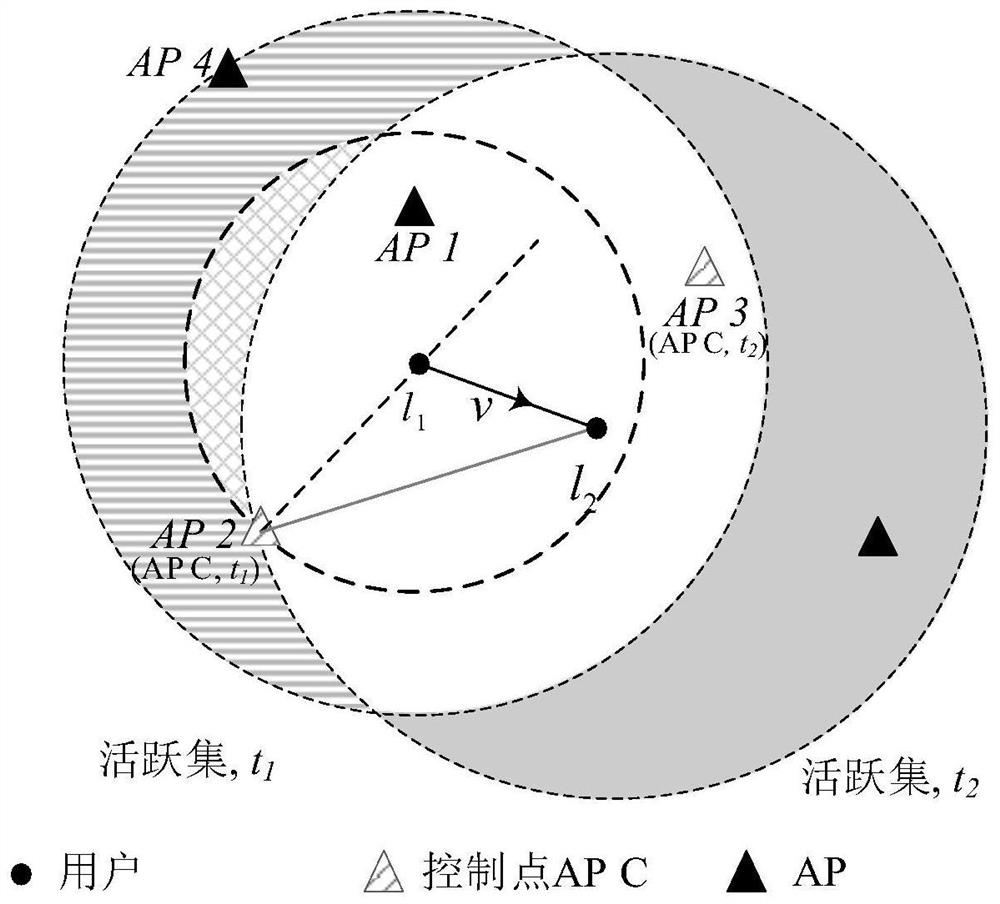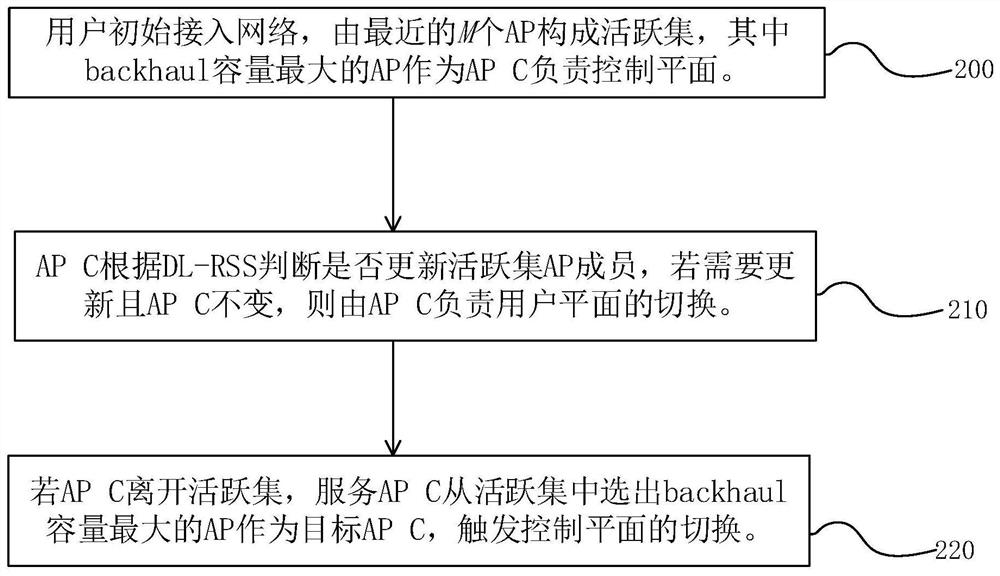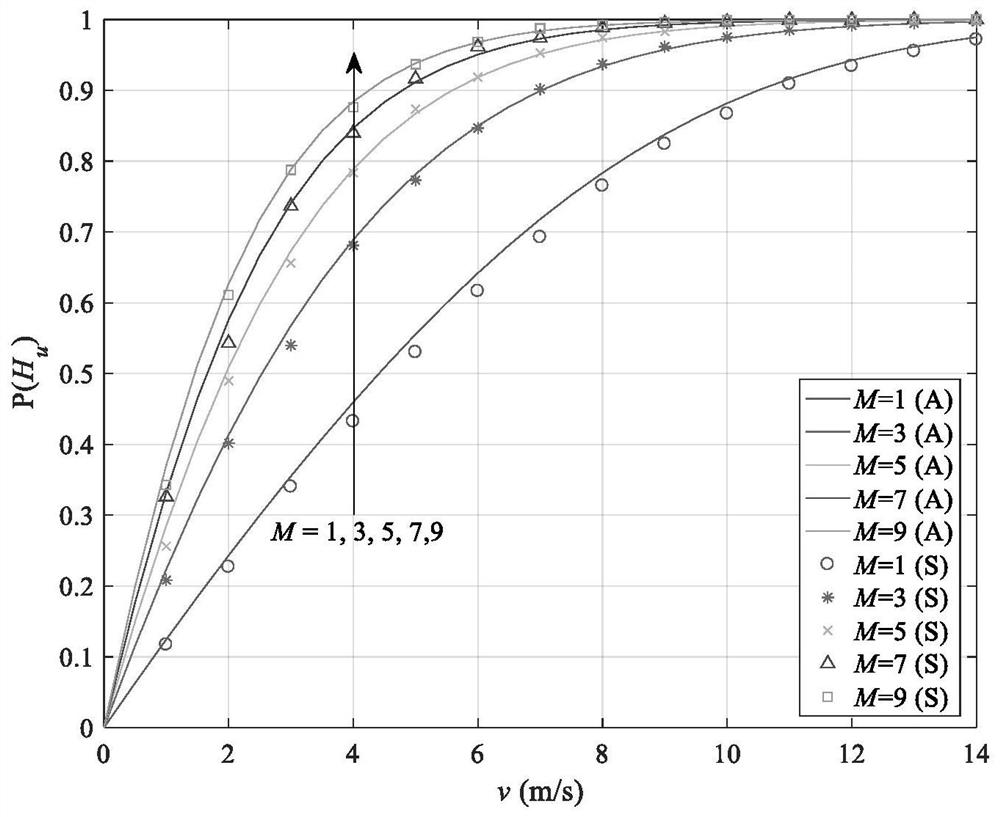An Anchor-Based User-Centric Multi-Connection Mobility Design Method
A design method and multi-connection technology, applied in the field of mobility research, can solve problems such as increased signaling overhead
- Summary
- Abstract
- Description
- Claims
- Application Information
AI Technical Summary
Problems solved by technology
Method used
Image
Examples
Embodiment Construction
[0021] Implementation steps of the user-centered power control mechanism:
[0022] In step 300, the user initially accesses the network, and M APs with the strongest DL-RSS form an active set for the user, and transmit data for the user at the same time. The AP with the largest backhaul capacity in the active set is responsible for the control plane as the AP C.
[0023] Step 310 , each time slot, the user reports the RSRP of surrounding APs to AP C as a measurement report, so as to determine whether to trigger a handover.
[0024] Step 320, AP C judges whether there is a new AP, which can provide stronger DL-RSS signal strength than any AP in the active set. If there is, and AP C in the active set remains unchanged, AP C triggers the switch.
[0025]Step 330, if the DL-RSS provided by AP C in the active set is weaker than that of the new AP C, before switching the control plane, the serving AP C selects the AP with the largest backhaul capacity from the active set as the ta...
PUM
 Login to View More
Login to View More Abstract
Description
Claims
Application Information
 Login to View More
Login to View More - R&D
- Intellectual Property
- Life Sciences
- Materials
- Tech Scout
- Unparalleled Data Quality
- Higher Quality Content
- 60% Fewer Hallucinations
Browse by: Latest US Patents, China's latest patents, Technical Efficacy Thesaurus, Application Domain, Technology Topic, Popular Technical Reports.
© 2025 PatSnap. All rights reserved.Legal|Privacy policy|Modern Slavery Act Transparency Statement|Sitemap|About US| Contact US: help@patsnap.com



